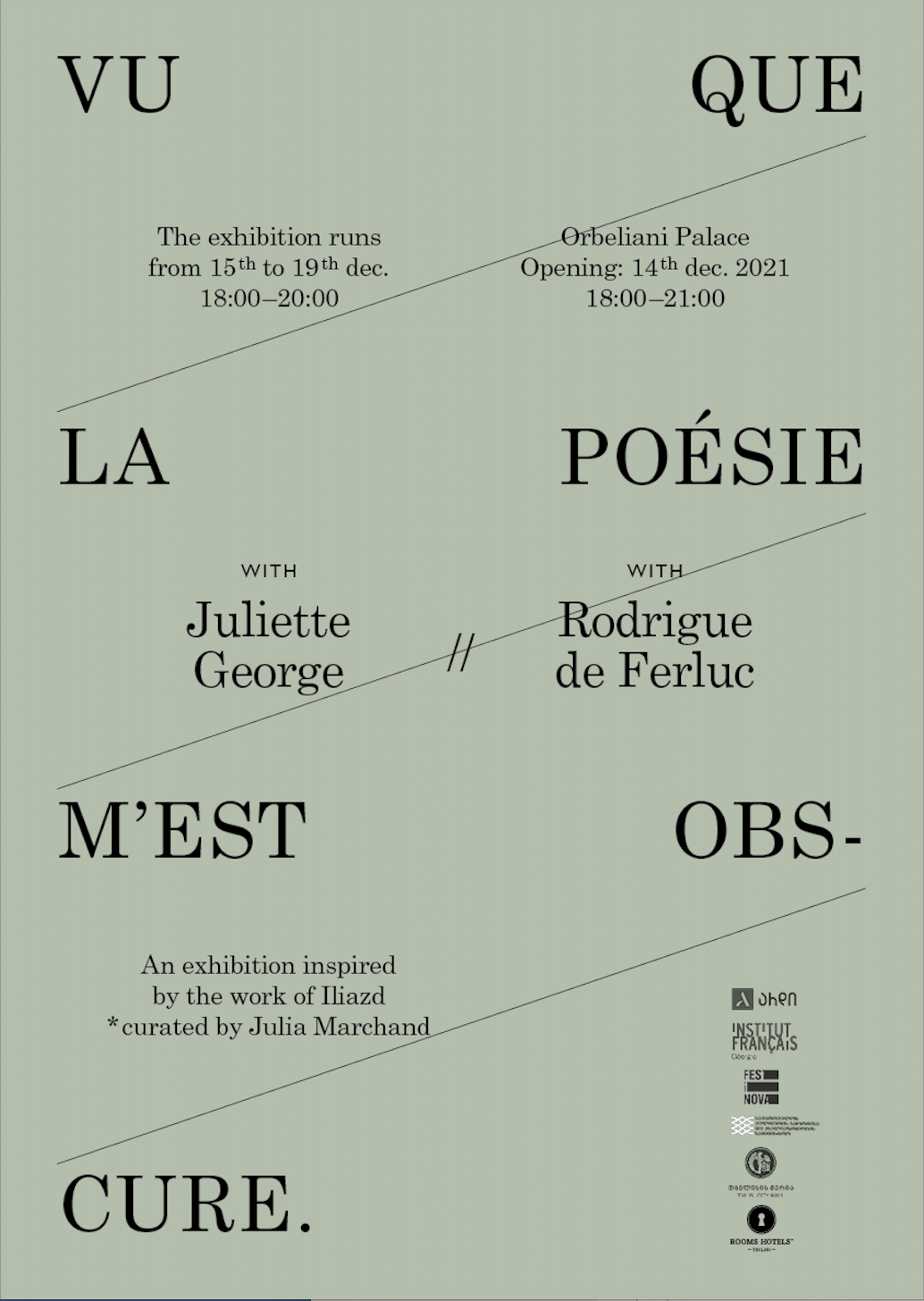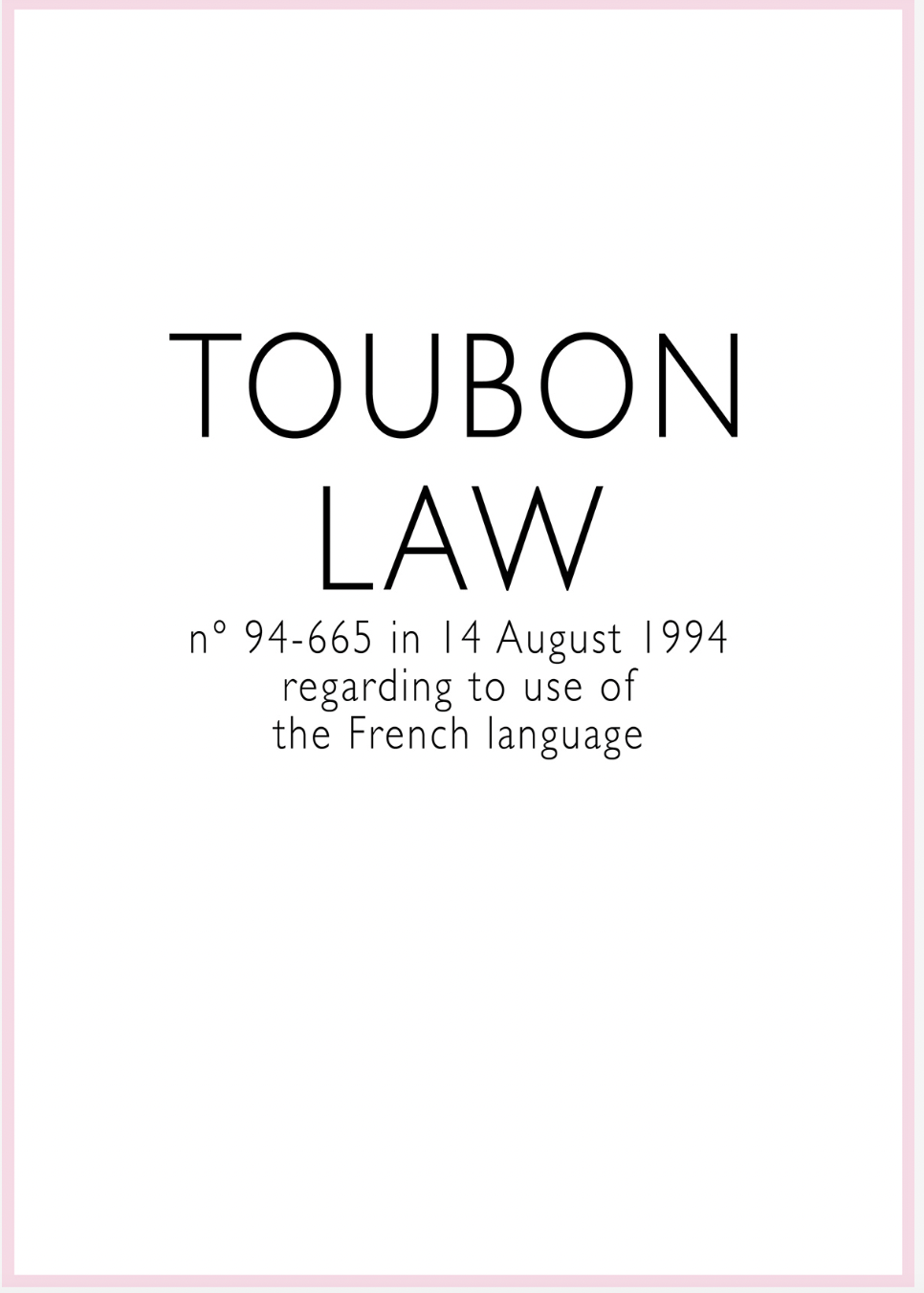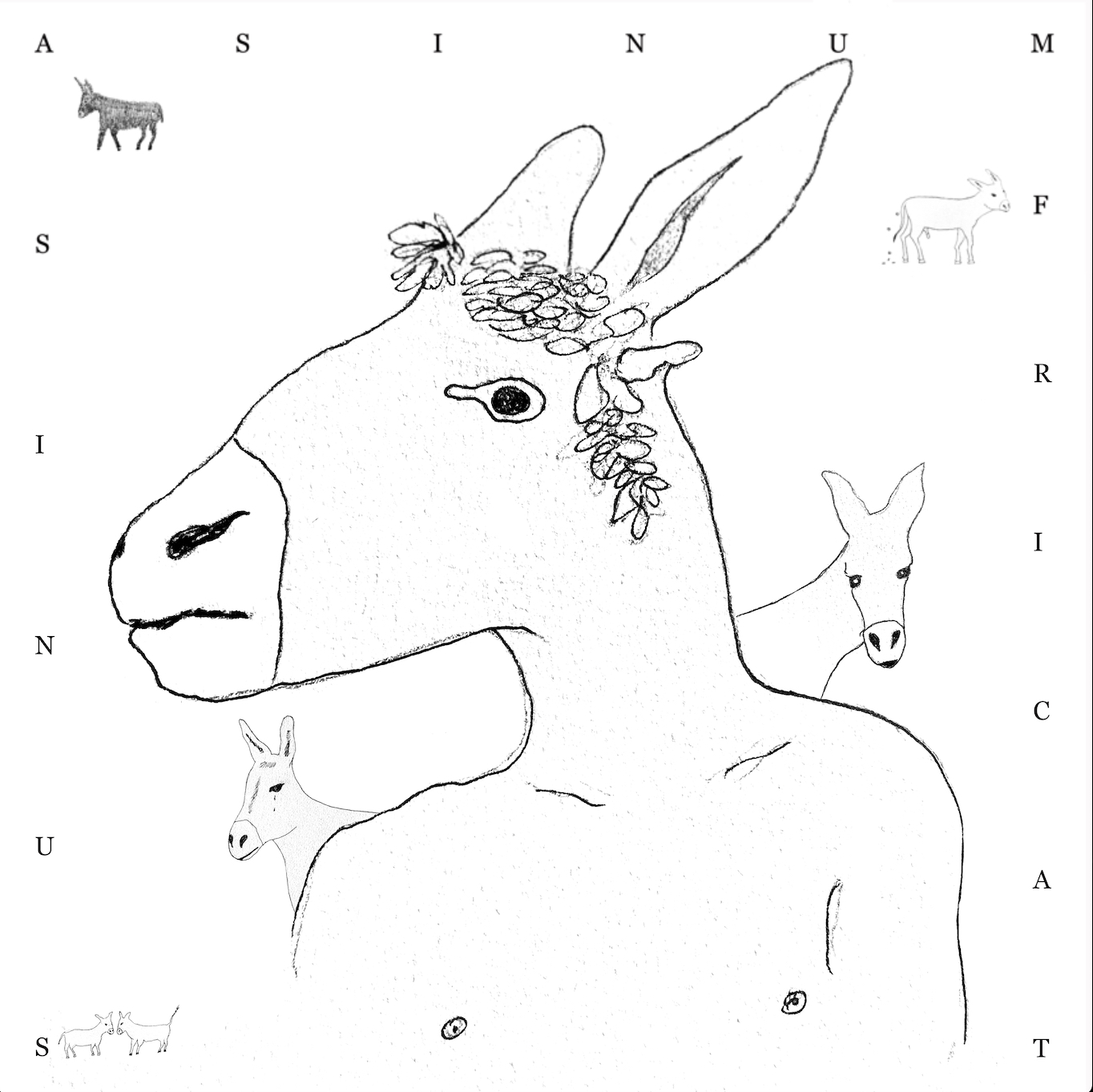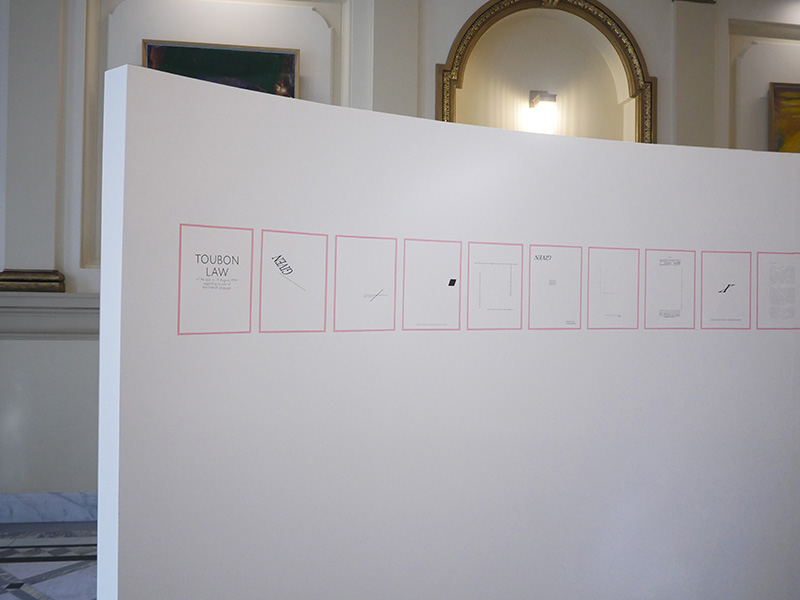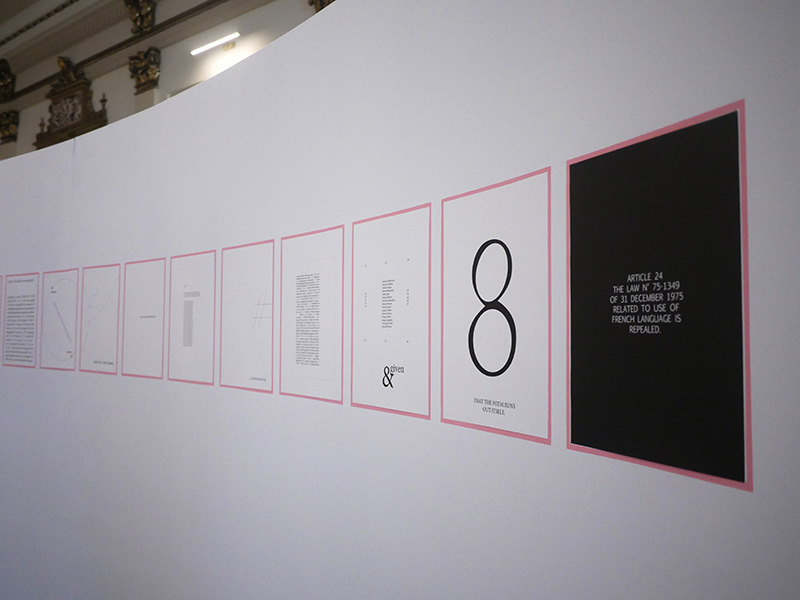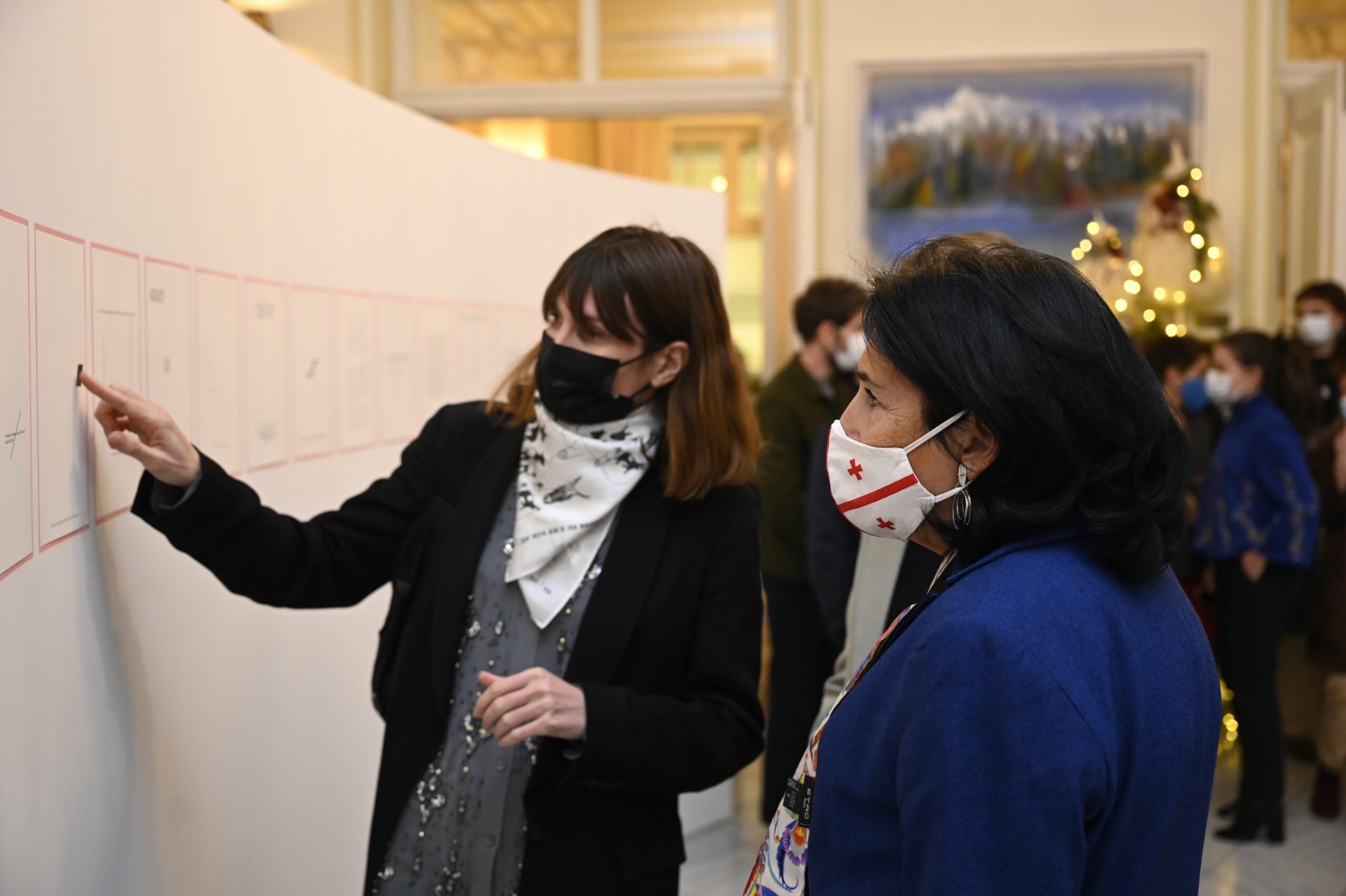Given that poetry is obscure to me
with Juliette George and Rodrigue de Ferluc
Curated by Julia Marchand
Orbeliani Palace, Tbilisi
as a part of Fest I Nova Festival
15th – 19th December 2021
Given that poetry is obscure to me is a two-person exhibition based on the legacy of Iliazd (1894-1975), taking place at the Orbeliani Palace, Tbilisi. It brings together new works by French artists Juliette George and Rodrigue de Ferluc made in response to Iliazd typographic oeuvre, especially L’Âne à louer (асЁл напракАт), L’île de Pâques (Остраф пАсхи) and Ledentu le Phare (лидантЮ фАрам), published between 1918 and 1923 (as a part of Aslaablitchia “Dunkeyness” cycle of five dras).
In those dras, the figure of the donkey holds various meanings, not devoid of spiritual and obscene connotations. In L’Âne à louer it is associated to an illusionistic and mysterious lover, also referring to the image of a Fiancé. In L’île de Pâques it is more closely linked to death, transformation and renaissance. More importantly, the theme of the metamorphosis, going back to Ovid and Lucius de Patras, is associated with the “self” (of the artist) revealed by zaum[1] poetry. Metamorphosis therefore lingers in the symbolic and phonetic meaning of language as well as within the notion of identity.
As poet, publisher, and typographer Ilia Zdanevich incorporated “the two dimensions inherent to language: a ‘thrust’ towards the graphic and the use of the voice, the phoneticization of the sign”[2]. In his oeuvre, the graphic sign can be a feast for the eye despite its inner strict logics. Iliazd’s texts are a battlefield for the senses, and the mind.
His act of deconstructing the conventions of order and form has led the artist Juliette George to further investigate administrative language as a form of pictural poetry, riffled with mystery. Juliette George’s practice is usually described as mingling administrative textuality and personal narratives in a warm post-conceptual manner. For this exhibition, she has embraced a sort of futurist approach in her understanding of what might be the most codified of all languages: the law that mandates the use of French language in official places. As a result, the Toubon Law from 1994 becomes the starting point of a wander through signs and forms, deprived of strict phoneticization, over thirty-six A4 sheets. Given that poetry is obscure to me is an excerpt from her contribution, which also kindly hints at the opacity of zaum poetry.
Rodrigue de Ferluc’s response to Iliazd combines both drawings and texts on silk scarfs. Presented on small pedestals, the three scarfs offer a variation of interpretations around the figure of the donkey and its inherent play on words. The work Icône IA (2021) represents the artist as a donkey reclaiming his work with pride (the donkey puts one of his fore legs on the cover of a book as sign of belonging). One might be tempted to locate this quest in the battle between Isidor Isou and Ilazd over the invention of Lettrisme. Another interpretation would lead to a more profound analysis such as locating this battle as a fight between Ilia, on the one hand, and Lilia, alias Lilith, on the other hand, i.e. between the masculine and feminine potentialities of his own psyche.
[1] Régis Gayraud, in Portrait de Gogol en « toutiste » : Iliazd et Gogol, La Revue russe (2010)
[2] Francoise Le Gris-Bergmann in Iliazd and the constellation of his œuvre, Iliazd and the illustrated book, The Museum of Modern Art, NY, 1987.
This exhibition is organized as a part of Fest I Nova 2021 and supported by the French Institute, Ardi Insurance, Tbilisi City Hall, Ministry of Culture, Sport and Youth, and Rooms Hotel, Adjara Group.
